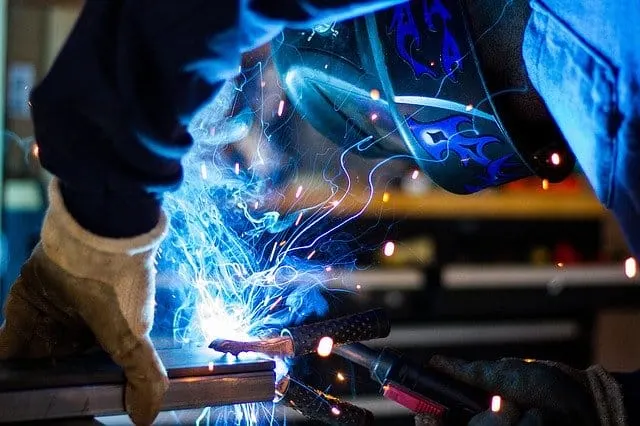 Since you have come to this page, we are going to assume you’re a metal enthusiast, or you’re looking to jump start your welding career by simply learning how to cut metals for your next project.
Since you have come to this page, we are going to assume you’re a metal enthusiast, or you’re looking to jump start your welding career by simply learning how to cut metals for your next project.
How much do you know about metals and welders? Welders are engineered to fuse two or more pieces of metals together, but the use of welders doesn’t stop there. While welders are used to join metals together, they can also be used to cut metals–but only if you know what you are doing.
If you are fine with a not-so-clean cut and it won’t cause any problems for you, or if you simply don’t have the right resources and equipment required cutting the piece properly, then a welder is capable of performing the job for you. Keep in mind that this metal cutting operation can be potentially dangerous, and should be done only if you know how.
How to Cut Metals Using a Welder?
For starters, you can set your welding machine to direct current, or DC, electrode negative.
Next, turn your amperage to over 200. You may use a 6010 or 6011 rod soaked in water or you may opt for a specially designed cutting rod.
You may start your arc on either side of the edge, and then move along the line. With a sawing motion, push the molten metal out of the path. You may repeat as necessary.
Again, to stress this enough, this is not the ideal method to cut metals. Although welders can cut metals, they are not specifically designed for this kind of operation. The result could be messy and worse, dangerous. However, risks can be reduced at a certain level if you do the proper steps.
Of course, in the welding industry, safety precautions are always a must. Always use the proper protective gears, and use your welder only in a well-ventilated area. The metal cutting process with a welder generates a lot of smoke. Doing this in a closed area can lead to smoke buildup, reducing visibility and causing damage to your respiratory system.
Setting Up Your Welder
When it comes to cutting metals with a welder, there’s more to setting up your machine than just plugging it in the color-coded sockets. You will also need to modify the settings of your welder to get power, sufficient enough to cut through the metal.
Choosing the Power Supply Type
Alternating current is more beneficial when you’re aiming for a reduced arc blow when welding, especially when you’re working on a magnetized metal. However, when it comes to cutting metals, you will want to benefit from the deep penetration provided by direct current.
When operating on direct current, you can either make the electrode positive or negative.
Making the electrode negative will result in more cutting power as 2/3 of the heat will be focused into the metal. The metal will then melt rapidly which results in a swift cut.
In the case when an electrode is positive, only 1/3 of the heat will be directed into the metal which results in a slow cutting process
Preparing the Metal
As we have mentioned, cutting metals with a welder will not result in a clean and very precise cut. Nevertheless, it won’t hurt if you prepare the metal to make the cut as straight as possible, right? Start by marking the preferred path of the cut using an engineer’s chalk. Having a guide to follow can be very helpful, especially when the arc is sparked.
In the case where the metal is small, secure it in place by clamping it to prevent the metal from moving during the cutting process. Also, you may want to clamp the grounding lead onto the metal so that an arc can be produced.
Choosing a Welding Rod
Since welders are not specifically engineered to cut through metals, this operation can be damaging to the welding rod that you will use. It’s important to use a durable rod, otherwise the rod will combust in the cutting process–even faster than the metal itself!
A good option you can use is a welding rod that is designed to cut through metal.
Welders are not designed for cutting through metals, but the practice is common among experienced welders. Hence, some manufacturers have innovated welding rods designed to endure the damaging operation.
Cutting the Metal
Your welding rod should line up in parallel with the line you are going to cut. You can start on either end and create the arc. Stick the rod into the weld to break through any pooling molten metal once the arc is created. The rod should always touch the base metal. In a sawing motion, pull back and forth gently as you move along the line of the cut.
Conclusion
Cutting metals with a welder can be a messy process, and can be very difficult especially if you are an inexperienced or novice welder. But, knowing the alternative means with whatever tools and equipment you have is also a good thing, as long as you know what you are doing.
- Sagittarius Man & Gemini Woman Love and Sex Compatibility - January 31, 2024
- Taurus Ascendant Rising Personality Traits in Men (Guide) - January 31, 2024
- How to Seduce and Attract a Sagittarius Man (Seduction Tips) - January 31, 2024
